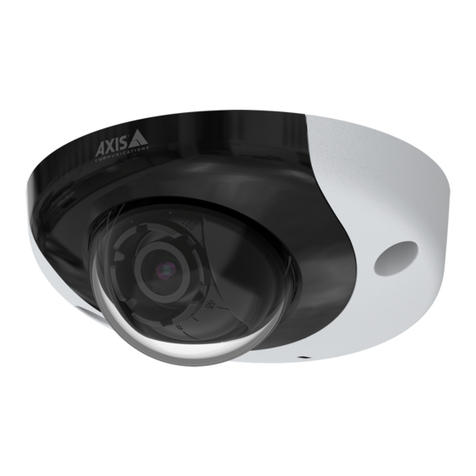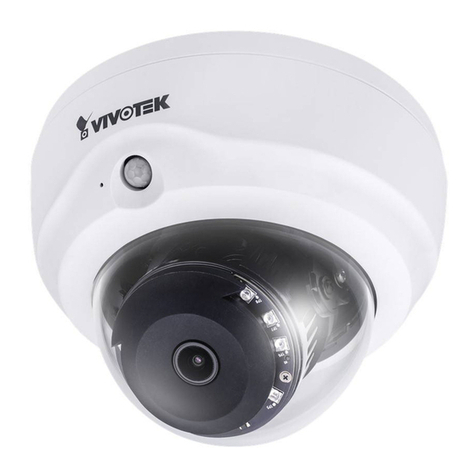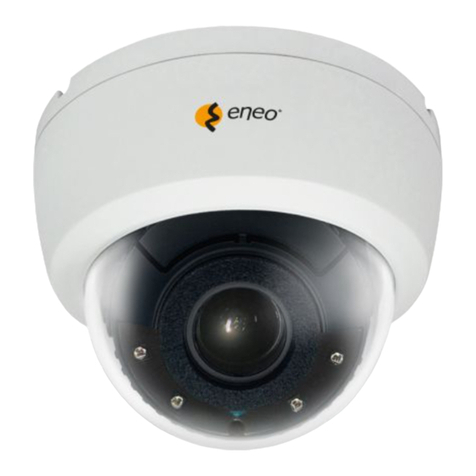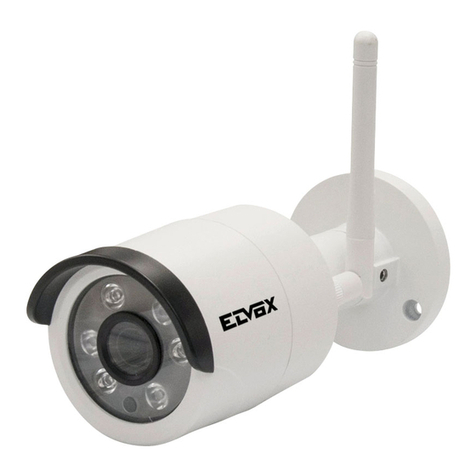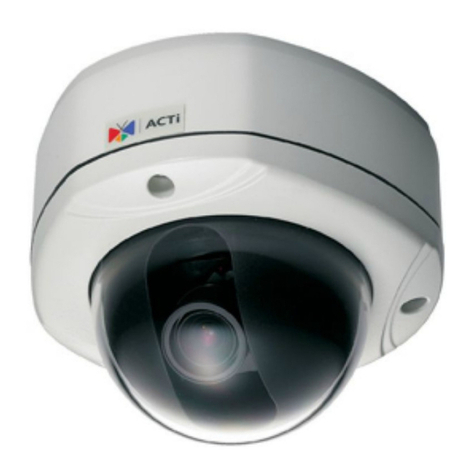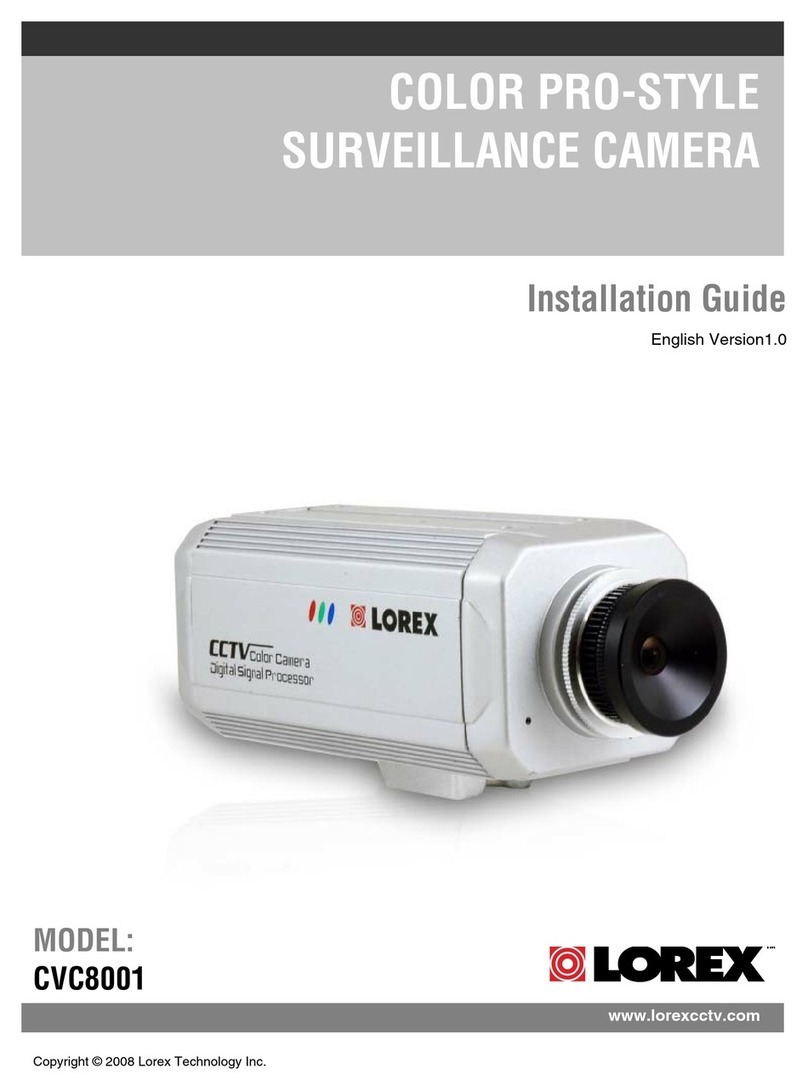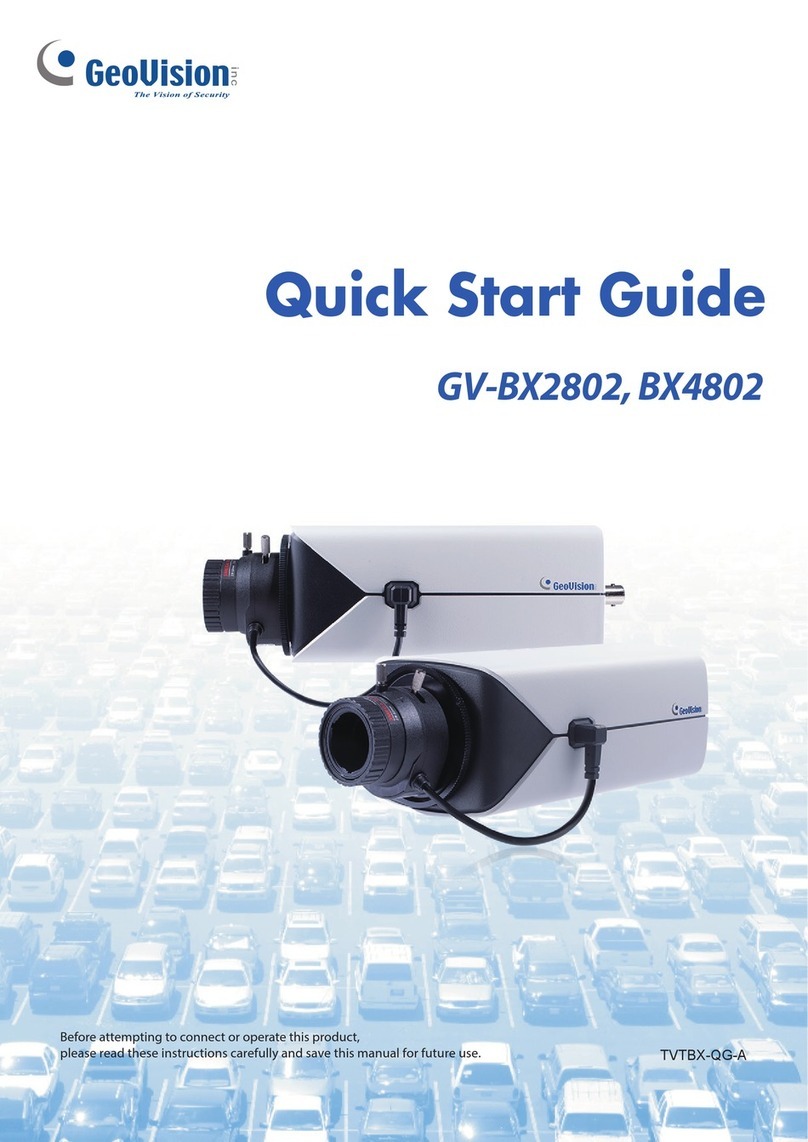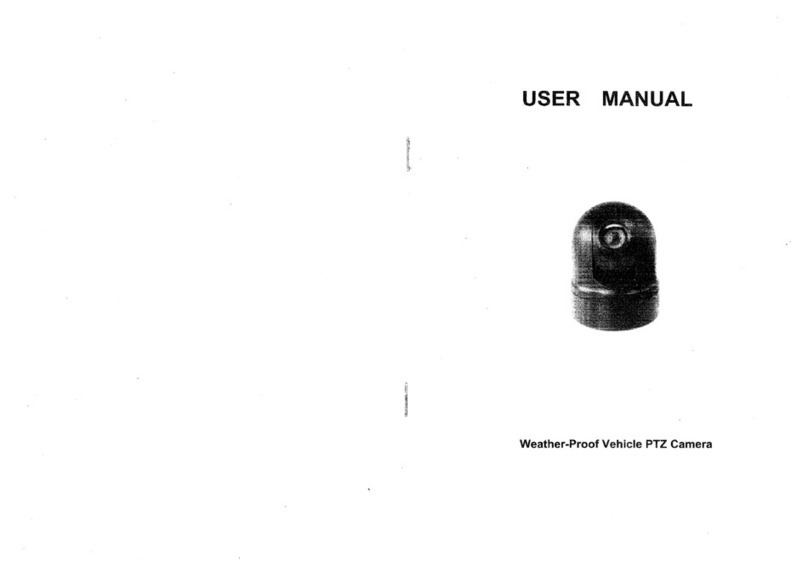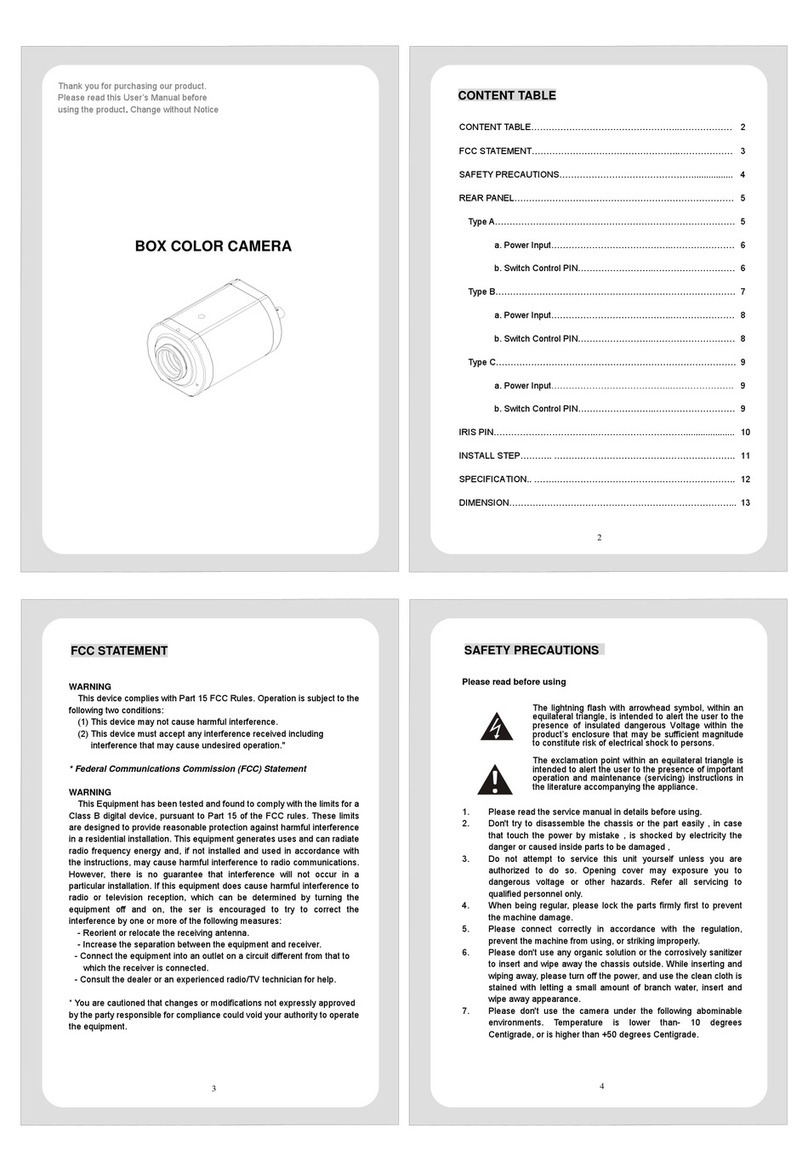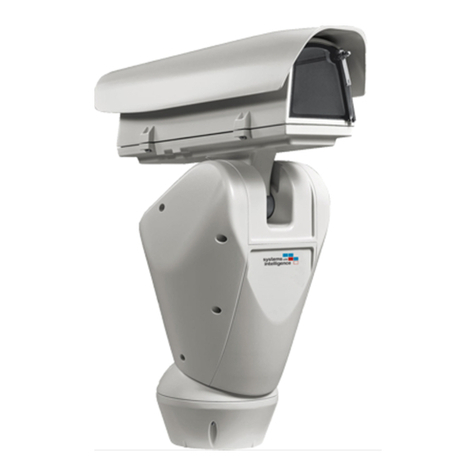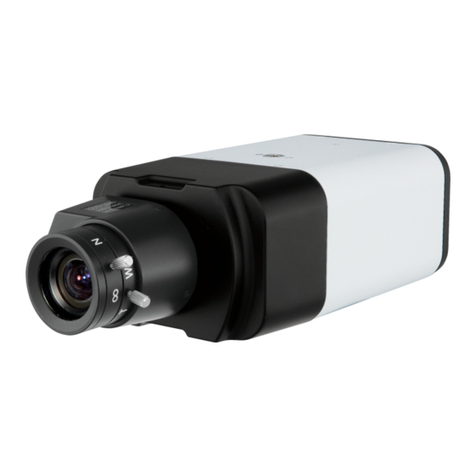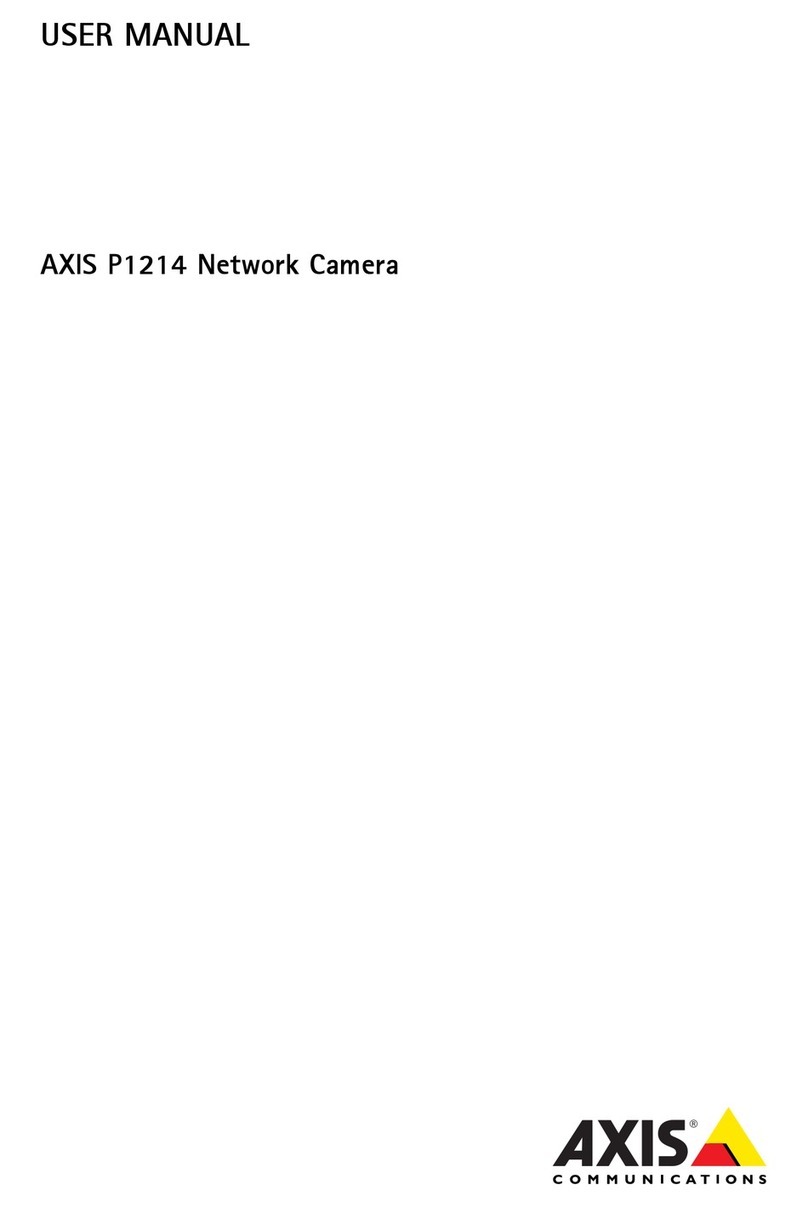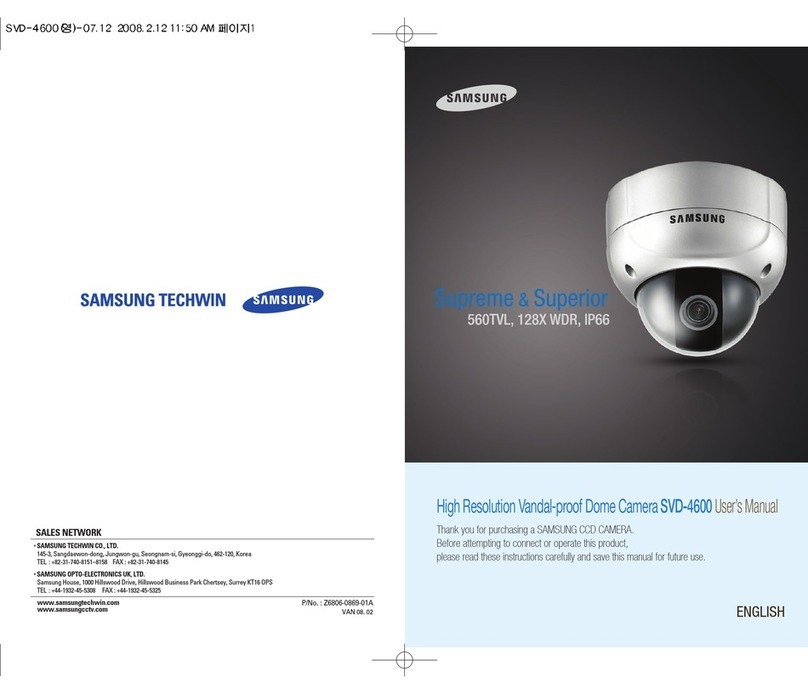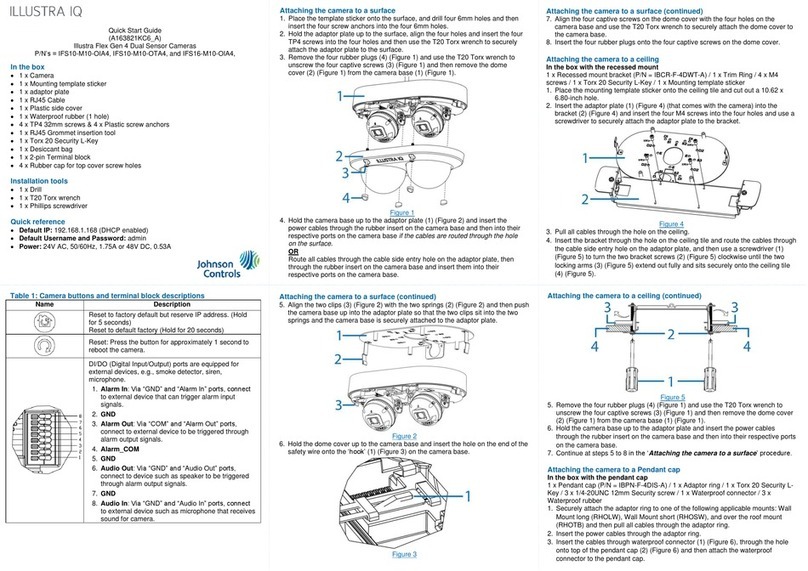Princeton Instruments PI-MAX System User manual

4411-0069
Version 5.F
September 9, 2009
*4411-0069*

Copyright 2003-2009 Princeton Instruments, a division of Roper Scientific, Inc.
3660 Quakerbridge Rd
Trenton, NJ 08619
TEL: 800-874-9789 / 609-587-9797
FAX: 609-587-1970
All rights reserved. No part of this publication may be reproduced by any means without the written
permission of Princeton Instruments, a division of Roper Scientific, Inc. ("Princeton Instruments").
Printed in the United States of America.
IPLab is a trademark of Scanalytics, Inc.
Macintosh is a registered trademark of Apple Computer, Inc.
Programmable Timing Generator and PI-MAX2 are trademarks, and PI-MAX and PVCAM are registered
trademarks of Roper Scientific, Inc.
Scientific Imaging ToolKit and SITK are trademarks of R Cubed Software Consultants, LLC.
TAXI is a registered trademark of AMD Corporation.
Windows and Windows NT are registered trademarks of Microsoft Corporation in the United States
and/or other countries.
The information in this publication is believed to be accurate as of the publication release date. However,
Princeton Instruments does not assume any responsibility for any consequences including any damages
resulting from the use thereof. The information contained herein is subject to change without notice.
Revision of this publication may be issued to incorporate such change.

iii
Table of Contents
Attention! ........................................................................................................... xv
Chapter 1 Introduction...................................................................................... 17
PI-MAX System Components ..........................................................................................17
Camera Head..............................................................................................................17
ST-133 Controller ......................................................................................................18
Cables.........................................................................................................................18
Summary of PI-MAX Data Acquisition...........................................................................19
Safety Information............................................................................................................20
Safety Related Symbols Used in This Manual...........................................................20
Grounding and Safety.................................................................................................21
Intensifier Modes and Safety......................................................................................21
Audible Alarm............................................................................................................21
High Intensity Light Damage.....................................................................................22
Precautions........................................................................................................................ 22
Cleaning and Maintenance................................................................................................22
Cleaning the Controller and Camera..........................................................................22
Cleaning Optical Surfaces..........................................................................................23
Flushing and Refilling the Intensifier Chamber.........................................................23
Repairs..............................................................................................................................23
Manual Organization ........................................................................................................24
Chapter 2 Installation Overview....................................................................... 27
Chapter 3 System Setup................................................................................... 33
Introduction....................................................................................................................... 33
Dangers and Warnings......................................................................................................33
Unpacking the System...................................................................................................... 33
Checking the Equipment and Parts Inventory...................................................................33
System Requirements .......................................................................................................34
Environmental............................................................................................................34
Ventilation..................................................................................................................34
Power..........................................................................................................................35
Host Computer ...........................................................................................................35
Verifying Controller Voltage Setting................................................................................36
Mounting the PI-MAX......................................................................................................37
Imaging Applications.................................................................................................37
Spectroscopy Applications.........................................................................................37
Microscopy Applications ...........................................................................................37
Installing the Application Software.................................................................................. 38
Setting up the Communication Interface ..........................................................................38
Setting up a PCI Interface ..........................................................................................38
Setting up a USB 2.0 Interface...................................................................................40
Connecting the Interface (Controller-Computer) Cable ...................................................42

iv PI-MAX/PI-MAX2 System Manual Version 5.F
TAXI®Cable (6050-0148-CE)................................................................................... 42
USB 2.0 Cable (6050-0494).......................................................................................42
Connecting the Detector-Controller Cable .......................................................................42
Connecting to the Timing Generator ................................................................................43
PTG ............................................................................................................................43
DG535........................................................................................................................43
Making the Coolant Circulator-Camera Connections.......................................................44
Entering the Default Camera System Parameters into WinX (WinView/32,
WinSpec/32, or WinXTest/32).....................................................................................44
Chapter 4 First Light ......................................................................................... 47
Introduction....................................................................................................................... 47
Required Equipment and Cables.......................................................................................47
Cable Connections............................................................................................................48
Before Turning on the System..........................................................................................48
Turning on the System and Setting Up the Software........................................................49
Configuring the Software for Shutter Mode Operation.................................................... 49
Setup menu.................................................................................................................49
Acquisition menu .......................................................................................................50
Pulser..........................................................................................................................50
Pre-Acquisition Check......................................................................................................51
Room Illumination .....................................................................................................51
If Imaging with a Lens ...............................................................................................51
If Taking Spectra........................................................................................................51
Initial Data Acquisition..................................................................................................... 51
Focusing............................................................................................................................ 52
Final Comments................................................................................................................ 52
Chapter 5 General Operation Factors ............................................................ 53
Introduction....................................................................................................................... 53
Data Acquisition Sequence...............................................................................................53
USB 2.0 and System On/Off Sequences...........................................................................54
Pre-Exposure Removal of Accumulated Charge..............................................................54
Introduction................................................................................................................54
Dark Charge ...............................................................................................................54
Clean Cycles...............................................................................................................55
Continuous Cleans Cycles..........................................................................................56
Shutter Compensation Time .............................................................................................57
Temperature Control.........................................................................................................57
Cooling Method..........................................................................................................57
Setting the Temperature .............................................................................................58
Exposure ...........................................................................................................................58
Exposure with an Image Intensifier............................................................................59
Saturation ...................................................................................................................59
Background Subtraction ...................................................................................................59
Readout of the Array.........................................................................................................60
Full Frame Readout....................................................................................................60
Interline Readout........................................................................................................61
Binned Readout (Hardware Binning).........................................................................64
Software Binning..............................................................................................................66

Table of Contents v
Digitization .......................................................................................................................67
Experiment Setup|Main ....................................................................................................67
Exposure Time ...........................................................................................................67
Number of Images/Spectra and Accumulations.........................................................68
CCD Readout .............................................................................................................68
Amplifier....................................................................................................................68
Intensifier Gain...........................................................................................................68
Intensifier Mode.........................................................................................................68
Experiment Setup|Timing................................................................................................. 69
Timing Mode..............................................................................................................69
Shutter Control...........................................................................................................69
Fast Mode or Safe Mode ............................................................................................69
Delay Time.................................................................................................................70
Wait for TTL and TTL Line.......................................................................................70
Edge Trigger...............................................................................................................70
Chapter 6 Shutter Mode Operation.................................................................. 73
Introduction....................................................................................................................... 73
Cabling.............................................................................................................................. 73
Shutter Control..................................................................................................................73
Timing Modes................................................................................................................... 74
Timing Modes and Cleans/Continuous Cleans................................................................. 75
Free Run.....................................................................................................................75
External Sync .............................................................................................................76
Internal Sync (PTG) ...................................................................................................78
External Triggering...........................................................................................................78
Chapter 7 Gated Operation with a PTG........................................................... 81
Introduction....................................................................................................................... 81
Precautionary Measures....................................................................................................82
Intensifier Modes and Safety......................................................................................82
Alarm..........................................................................................................................82
Timing Mode ....................................................................................................................83
Fast Gating........................................................................................................................83
MCP Bracket Pulsing........................................................................................................85
Introduction................................................................................................................85
Bracket Pulsing in LIF Measurements.......................................................................86
Bracket Pulsing in Nanosecond Pump Probe Experiments........................................86
Limitations of Bracket Pulse Gating .......................................................................... 86
Impact of Bracket Pulsing on Delay........................................................................... 87
Setup...........................................................................................................................87
MCP Gating......................................................................................................................88
Introduction................................................................................................................88
Setup and Operation...................................................................................................89
Gain Variation............................................................................................................89
Fluorescence Experiment...........................................................................................89
500 Picosecond Gating Option......................................................................................... 91
Additional Experiments....................................................................................................92
Introduction................................................................................................................92

vi PI-MAX/PI-MAX2 System Manual Version 5.F
Procedure for Setting up and Performing a Swept Gate Experiment (Fixed
Width, Variable Delay) ..............................................................................................93
Procedure for Setting up and Performing a Single Shot Experiment.......................102
Procedure for Setting up and Performing a Swept Gate Experiment (Variable
Width, Variable Delay):...........................................................................................105
Procedure for Setting up and Performing a Static Gate Experiment (Fixed
Width, Fixed Delay).................................................................................................105
Chapter 8 Gated Operation with a DG535..................................................... 107
Introduction..................................................................................................................... 107
Precautionary Measures..................................................................................................108
Intensifier Modes and Safety....................................................................................108
Alarm........................................................................................................................108
DG-535 and Gate Mode Overview.................................................................................109
Timing Modes................................................................................................................. 109
External Sync ...........................................................................................................109
External Sync with Continuous Cleans....................................................................111
DG535 Gating Setup....................................................................................................... 111
Fast Gating......................................................................................................................113
MCP Bracket Pulsing......................................................................................................115
Introduction..............................................................................................................115
Bracket Pulsing in LIF Measurements.....................................................................116
Bracket Pulsing in Nanosecond Pump Probe Experiments......................................116
Limitations of Bracket Pulse Gating ........................................................................ 116
Impact of Bracket Pulsing on Delay......................................................................... 117
Setup.........................................................................................................................117
MCP Gating....................................................................................................................117
Introduction..............................................................................................................117
Setup and Operation.................................................................................................118
Gain Variation..........................................................................................................118
Fluorescence Experiment.........................................................................................118
Chapter 9 Kinetics Operation......................................................................... 121
Introduction..................................................................................................................... 121
Masking ..........................................................................................................................121
Shutter Mode and Kinetics..............................................................................................121
Introduction..............................................................................................................121
Free Run...................................................................................................................121
Single Trigger...........................................................................................................122
Multiple Trigger.......................................................................................................122
Array Readout................................................................................................................. 123
PTG Burst Mode.............................................................................................................124
One Shot Experiments ....................................................................................................125
Gate Mode Experiments - Examples ..............................................................................126
Chapter 10 PI-MAX2 DIF Camera (Double Image Feature).......................... 129
Introduction..................................................................................................................... 129
Requirements..................................................................................................................129
Interline CCD Operation................................................................................................. 129
Timing Modes................................................................................................................. 130

Table of Contents vii
Single Trigger Mode ................................................................................................ 130
Dual Trigger Mode...................................................................................................131
Setup............................................................................................................................... 132
Hardware..................................................................................................................132
Software ...................................................................................................................132
Operation ........................................................................................................................132
Single Trigger Mode ................................................................................................ 132
Dual Trigger Mode...................................................................................................133
Tips and Tricks ...............................................................................................................134
Chapter 11 Tips and Tricks ............................................................................ 135
Introduction..................................................................................................................... 135
Overexposure Protection.................................................................................................135
Signal Delay.................................................................................................................... 135
Introduction..............................................................................................................135
Time Budgets ...........................................................................................................135
Measuring Coincidence............................................................................................136
Adjusting the Signal Delay.......................................................................................137
Optimizing the Gate Width and Delay.....................................................................138
Lasers..............................................................................................................................138
Free Running Lasers.................................................................................................138
Triggered Lasers.......................................................................................................139
Jitter..........................................................................................................................139
Inhibiting the Pulser during Readout.............................................................................. 139
Lens Performance ........................................................................................................... 139
Throughput...............................................................................................................140
Resolution.................................................................................................................140
Depth of Field...........................................................................................................140
Baseline Signal ...............................................................................................................140
Temperature Lock...........................................................................................................141
Intensifier Alarm.............................................................................................................141
Preamplifier Output Mode..............................................................................................142
Chapter 12 Microscopy Applications............................................................ 143
Introduction..................................................................................................................... 143
Mounting the Camera on the Microscope.......................................................................143
F-Mount....................................................................................................................144
C-Mount...................................................................................................................146
Operation ........................................................................................................................146
Xenon or Mercury Arc Lamp Precautions ...............................................................146
Focusing the Microscope..........................................................................................146
Adjusting the Parfocality of the Camera..................................................................147
Imaging Hints .................................................................................................................147
Fluorescence ...................................................................................................................147
Microscopes and Infrared Light......................................................................................148
Chapter 13 TTL Control .................................................................................. 149
Introduction..................................................................................................................... 149
TTL In............................................................................................................................. 149
Buffered vs. Latched Inputs............................................................................................150

viii PI-MAX/PI-MAX2 System Manual Version 5.F
TTL Out..........................................................................................................................150
TTL Diagnostics Screen .................................................................................................151
Hardware Interface .........................................................................................................151
Example....................................................................................................................152
Chapter 14 System Component Descriptions.............................................. 153
Introduction..................................................................................................................... 153
PI-MAX Camera.............................................................................................................153
Mount Adapters........................................................................................................153
Switches, Connectors and Indicators........................................................................153
ST-133 Controller...........................................................................................................155
Interface Card .................................................................................................................161
Pulser ..............................................................................................................................161
Spectrograph...................................................................................................................162
Cables .............................................................................................................................162
Application Software......................................................................................................164
User Manuals..................................................................................................................164
Chapter 15 Troubleshooting .......................................................................... 165
Introduction..................................................................................................................... 165
Alarm Sounds Sporadically............................................................................................ 166
Alarm Sounds Continuously........................................................................................... 166
Baseline Signal Suddenly Changes.................................................................................166
Camera Stops Working...................................................................................................166
Camera1 (or similar name) on Hardware Setup dialog box............................................167
Changing the ST-133 Line Voltage and Fuses............................................................... 168
Controller Is Not Responding.........................................................................................169
Data Loss or Serial Violation..........................................................................................169
Data Overrun Due to Hardware Conflict message..........................................................169
Data Overrun Has Occurred message.............................................................................170
Demo is only Choice on Hardware Wizard:Interface dialog (Versions 2.5.19.0
and earlier)................................................................................................................170
Demo, High Speed PCI, and PCI(Timer) are Choices on Hardware
Wizard:Interface dialog (Versions 2.5.19.0 and earlier)..........................................172
Detector Temperature, Acquire, and Focus are Grayed Out (Versions 2.5.19.0
and earlier)................................................................................................................174
Error Creating Controller message .................................................................................175
Error Occurs at Computer Powerup................................................................................ 175
Excessive Readout Noise................................................................................................ 177
No CCD Named in the Hardware Wizard:CCD dialog (Versions 2.5.19.0 and
earlier) ......................................................................................................................178
Program Error message...................................................................................................178
Removing/Installing a Plug-In Module ..........................................................................179
Securing the Detector-Controller Cable Slide Latch ...................................................... 181
Serial violations have occurred. Check interface cable. .................................................182
Temperature Lock Cannot be Achieved or Maintained..................................................182
Appendix A Specifications............................................................................. 183
General............................................................................................................................183
Computer ........................................................................................................................185

Table of Contents ix
Operating Environment...................................................................................................186
Controller........................................................................................................................186
Internal Pulser................................................................................................................. 188
Appendix B Outline Drawings........................................................................ 189
PI-MAX/PI-MAX2.........................................................................................................189
ST-133A Controller........................................................................................................190
ST-133B Controller ........................................................................................................191
Appendix C Software ...................................................................................... 193
Introduction..................................................................................................................... 193
Camera State................................................................................................................... 193
Main tab page (Experiment Setup on Acquisition menu)............................................... 194
Pulsers dialog box...........................................................................................................195
PTG dialog box............................................................................................................... 196
DG535 dialog box........................................................................................................... 196
Appendix D C-Mount and F-Mount Adapters ............................................... 199
Attaching the C-Mount or F-Mount Adapter to the PI-MAX.........................................199
Mounting the Lens..........................................................................................................200
Mounting Orientation .....................................................................................................201
Focusing.......................................................................................................................... 202
Appendix E Spectroscopy-Mount and Spectrograph Adapters ................. 203
Spectroscopy-Mount Adapter.........................................................................................203
Spectrograph Adapters....................................................................................................204
Spectrograph-Detector Focusing ....................................................................................204
Acton (Sliding Tube) ......................................................................................................206
Acton (C-Mount Adapter)...............................................................................................207
Chromex 250 IS..............................................................................................................208
ISA HR 320 ....................................................................................................................209
ISA HR 640 ....................................................................................................................210
SPEX 270M....................................................................................................................211
SPEX 500M....................................................................................................................212
SPEX TripleMate............................................................................................................ 213
Appendix F IVUV Detector.............................................................................. 215
Introduction..................................................................................................................... 215
Nitrogen Purging of the Detector.................................................................................... 215
Dryness Requirement...............................................................................................215
Backfilling................................................................................................................216
Appendix G USB 2.0 Limitations ................................................................... 217
Appendix H Glossary...................................................................................... 219
Declarations of Conformity ............................................................................ 225
PI-MAX with ST-133 and PTG...................................................................................... 226
PI-MAX with ST-133.....................................................................................................227

x PI-MAX/PI-MAX2 System Manual Version 5.F
PI-MAX2 with 16-Bit 5 MHz ST-133............................................................................228
Warranty & Service ......................................................................................... 229
Limited Warranty............................................................................................................ 229
Basic Limited One (1) Year Warranty .....................................................................229
Limited One (1) Year Warranty on Refurbished or Discontinued Products............229
XP Vacuum Chamber Limited Lifetime Warranty ..................................................229
Sealed Chamber Integrity Limited 12 Month Warranty...........................................230
Vacuum Integrity Limited 12 Month Warranty .......................................................230
Image Intensifier Detector Limited One Year Warranty..........................................230
X-Ray Detector Limited One Year Warranty ..........................................................230
Software Limited Warranty...................................................................................... 230
Owner's Manual and Troubleshooting .....................................................................231
Your Responsibility..................................................................................................231
Contact Information........................................................................................................232
Index................................................................................................................. 233
Figures
Figure 1. Typical Standard PI-MAX System Components.............................................. 17
Figure 2. Major Components of the Intensifier-CCD......................................................19
Figure 3. PI-MAX with PTG System Diagram ...............................................................29
Figure 4. PI-MAX2 with PTG System Diagram..............................................................29
Figure 5. Gen II PI-MAX with DG535 System Diagram................................................ 30
Figure 6. Gen II PI-MAX2 with DG535 System Diagram.............................................. 30
Figure 7. Gen III PI-MAX with DG535 System Diagram............................................... 31
Figure 8. Gen III PI-MAX2 with DG535 System Diagram.............................................31
Figure 9. Power Module ..................................................................................................36
Figure 10. WinView/32 Installation: Interface Card Driver Selection............................38
Figure 11. Camera Detection Wizard - Welcome dialog box..........................................45
Figure 12. RSConfig dialog box......................................................................................46
Figure 13. Hardware Setup wizard: PVCAM dialog box................................................46
Figure 14. Block Diagram of Signal Path in Standard PI-MAX System......................... 53
Figure 15. Clean Cycles in Free Run Operation..............................................................55
Figure 16. Timing Diagram: External Sync without Continuous Cleans ........................56
Figure 17. Timing Diagram: External Sync with Continuous Cleans .............................57
Figure 18. Full Frame at Full Resolution......................................................................... 61
Figure 19. Overlapped Mode Exposure and Readout......................................................62
Figure 20. Non-Overlapped Mode Exposure and Readout..............................................63
Figure 21. 2 × 2 Binning for Full Frame CCD ................................................................65
Figure 22. 2 × 2 Binning for Interline CCD.....................................................................66
Figure 23. Experiment Setup|Main tab............................................................................67
Figure 24. Experiment Setup|Timing dialog box.............................................................69
Figure 25. Safe Mode and Fast Mode Operation.............................................................71
Figure 26. Clean Cycles in Free Run Operation..............................................................75
Figure 28. Timing Diagram: External Sync.....................................................................76
Figure 27. Flowchart of Two External Sync Timing Options in Shutter Mode .............76
Figure 29. Timing Diagram: External Sync with Continuous Cleans .............................77

Table of Contents xi
Figure 30. Timing Diagram: Internal Sync (PTG)...........................................................78
Figure 31. Timing Diagram: Internal Sync with an External Trigger..............................78
Figure 32. PTG Fast Gating Experiment Block diagram.................................................84
Figure 33. Fast Gating Measurement Results.................................................................. 84
Figure 34. Timing: Bracket Pulsing.................................................................................85
Figure 35. PI-MAX Timing for MCP Bracket Pulsing with PTG Timing Generator .....88
Figure 36. MCP Gated Operation Cabling ......................................................................90
Figure 37. PI-MAX Timing in MCP Gated Operation with PTG Timing Generator...... 90
Figure 38. Experiment Setup|Main tab page....................................................................91
Figure 39. PTG|Triggers tab page.................................................................................... 91
Figure 40. Repetitive Gating dialog box..........................................................................92
Figure 41. Experiments with the PI-MAX.......................................................................92
Figure 42. Experiment is Master Clock: Hardware Setup and Timing Diagram............. 94
Figure 43. Hardware Setup: Controller/ Camera and Interface tab pages .......................95
Figure 44. Define Spectrograph and Install/Remove Spectrographs dialogs ..................96
Figure 45. Move Spectrograph dialog .............................................................................96
Figure 46. Experiment Setup: Main and Timing tab pages .............................................97
Figure 47. Experiment Setup: ADC and ROI Setup tab pages........................................97
Figure 48. PTG: Triggers and Gating tab pages .............................................................. 98
Figure 49. Sequential Gating Setup and Width/Delay Sequence dialog boxes ............... 99
Figure 50. Aux. Trig. Out tab page.................................................................................. 99
Figure 51. Experiment Setup: Timing and Main tab pages ...........................................100
Figure 52. Experiment Results in 3-D ...........................................................................100
Figure 53. PTG is Master Clock: Hardware Setup and Timing Diagram...................... 101
Figure 54. Single Shot: Hardware Setup........................................................................102
Figure 55. Cleans and Skips: Default Values Loaded ...................................................103
Figure 56. Experiment Setup: Gain Selected.................................................................103
Figure 57. Repetitive Gating Setup: 100 nsec Width, 10 nsec Delay............................ 104
Figure 58. Single Shot Result: Fluorescence Spot, 100 nsec Width, 10 nsec Delay ..... 104
Figure 59. Single Shot Result: Fluorescence Spot, 100 ns Width, 10 ns Delay, Binned
Vertically......................................................................................................104
Figure 60. Repetitive Gating Setup dialog box.............................................................. 105
Figure 61. DG535: External Sync, PreOpen, Exposure Time = 0 sec...........................110
Figure 62. DG535: External Sync, PreOpen, Exposure Time > 0 sec...........................110
Figure 63. DG535: External Sync, PreOpen, Cont. Cleans, Exposure Time > 0 sec. ...111
Figure 64. DG535 Triggers tab...................................................................................... 111
Figure 65. DG535 Gating tab.........................................................................................112
Figure 66. DG535 Repetitive Gating Setup dialog........................................................ 112
Figure 67. DG535 Sequential Gating Setup dialog........................................................112
Figure 68. DG535 Comm Port tab................................................................................. 113
Figure 69. DG535 Fast Gating Experiment Block Diagram.......................................... 114
Figure 70. Fast Gating Measurement Results................................................................ 114
Figure 71. Timing: Bracket Pulsing...............................................................................115
Figure 72. Gating tab page............................................................................................. 117
Figure 73. MCP Gated Operation Cabling ....................................................................119
Figure 74. PI-MAX Timing in MCP Gated Operation with DG535 Timing Generator 120
Figure 75. Kinetics in Shutter Mode: Free Run Timing Diagram .................................122
Figure 76. Kinetics in Shutter Mode: Single Trigger Timing Diagram......................... 122
Figure 77. Kinetics in Shutter Mode: Multiple Trigger Timing Diagram .....................123
Figure 78. Kinetics Readout ..........................................................................................124

xii PI-MAX/PI-MAX2 System Manual Version 5.F
Figure 79. Timing Diagram: Experiment 1....................................................................127
Figure 80. Timing Diagram: Experiment 2....................................................................128
Figure 81. DIF Operation: Single Trigger Timing Diagram.......................................... 130
Figure 82. DIF Operation: Dual Trigger Timing Diagram............................................131
Figure 83. System Diagram: DIF Operation..................................................................132
Figure 84. Diagnostic Instruments F-mount adapters.................................................... 145
Figure 85. Bottom clamp secured to relay lens..............................................................145
Figure 86. TTL In/Out Connector.................................................................................. 151
Figure 87. TTL Diagnostics dialog box.........................................................................151
Figure 88. PI-MAX Rear Panel .....................................................................................153
Figure 89. PI-MAX2 Rear Panel ...................................................................................154
Figure 90. Power Switch Location (ST-133A and ST-133B)........................................ 156
Figure 91. ST-133 (Standard) Rear Panel Callouts........................................................157
Figure 92. ST-133 (PI-MAX2) Rear Panel Callouts......................................................159
Figure 93. Camera1 in Controller Type (Camera Name) Field.....................................167
Figure 94. Power Input Module..................................................................................... 168
Figure 95. Fuse Holder ..................................................................................................168
Figure 96. Data Overrun Due to Hardware Conflict dialog box....................................169
Figure 97. Hardware Wizard: Interface dialog box .......................................................171
Figure 98. RSConfig dialog box....................................................................................171
Figure 99. Hardware Wizard: PVCAM dialog box ....................................................... 172
Figure 100. Hardware Wizard: Interface dialog box .....................................................172
Figure 101. RSConfig dialog box: Two Camera Styles.................................................173
Figure 102. Hardware Wizard: PVCAM dialog box .....................................................173
Figure 103. RSConfig dialog box: Two Camera Styles.................................................174
Figure 104. Error Creating Controller dialog box..........................................................175
Figure 105. Hardware Wizard: Detector/Camera/CCD dialog box............................... 178
Figure 106. Program Error dialog box...........................................................................178
Figure 107. Module Installation.....................................................................................180
Figure 108. Serial Violations Have Occurred dialog box..............................................182
Figure 109. Outline Drawing: PI-MAX/PI-MAX2 with C-mount Adapter .................. 189
Figure 110. Outline Drawing: PI-MAX/PI-MAX2 with F-mount Adapter................... 189
Figure 111. Outline Drawing: PI-MAX/PI-MAX2 with Spectroscopy-mount Adapter190
Figure 112. Outline Drawing: ST-133A........................................................................190
Figure 113. Outline Drawing: ST-133B ........................................................................191
Figure 114. Camera State dialog box............................................................................. 193
Figure 115. Main tab page with PI-MAX camera .........................................................194
Figure 116. Pulsers dialog box.......................................................................................195
Figure 117. PTG dialog box...........................................................................................196
Figure 118. DG535 dialog box...................................................................................... 196
Figure 119. PI-MAX Standard Nose .............................................................................199
Figure 120. C-Mount Adapter........................................................................................199
Figure 121. F-Mount Adapter........................................................................................ 200
Figure 122. Dust Cover Lens......................................................................................... 200
Figure 123. F-mount (Nikon) Lens Adapter..................................................................201
Figure 124. PI-MAX Standard Nose .............................................................................203
Figure 125. Spectroscopy-Mount Adapter..................................................................... 203
Figure 126. Camera’s Purge Warning Label .................................................................215

Table of Contents xiii
Tables
Table 1. PCI Driver Files and Locations .........................................................................39
Table 2. USB Driver Files and Locations........................................................................ 42
Table 3. Readout Rates for Kodak 1024 × 1024 Array at 5 MHz ...................................64
Table 4. Timing Mode, Shutter Control, Ext. Trigger Input for Shutter Mode ...............74
Table 5. Timing Mode, Shutter Control, and Ext. Trigger Input when a PTG is the
Timing Generator ...........................................................................................83
Table 6. Single Shot Experiment Time Budget ............................................................. 102
Table 7. Timing Mode, Shutter Control, and Ext. Trigger Input when a DG535 is the
Timing Generator .........................................................................................109
Table 8. Burst Mode Repetition Rate for PI-MAX 512 and PI-MAX 1k Models......... 125
Table 9. Bottom clamps for different type microscopes................................................ 144
Table 10. Bit values with decimal equivalents: 1 = High, 0 = Low...............................150
Table 11. TTL In/Out Connector Pinout........................................................................151
Table 12. I/O Address & Interrupt Assignments before Installing Serial Card.............176
Table 13. I/O Address & Interrupt Assignments after Installing Serial Card................ 176
Table 14. Spectrograph Adapters................................................................................... 205
Table 15. Features Supported under USB 2.0................................................................217

xiv PI-MAX/PI-MAX2 System Manual Version 5.F
This page intentionally left blank.

xv
Attention!
Intensified CCD detectors, such as the PI-MAX, when biased ON, can be irreparably
damaged if continuously exposed to light levels higher than twice the A/D saturation
level. Thus it is critical that you not establish conditions that could result in damage to
the intensifier. Although intensified detectors are less prone to damage from background
light when operated gated, they are at significant risk to damage from high-intensity light
sources like a laser. High intensity sources can damage the intensifier before the
protection circuits have time to respond, or even cause spot damage without the
protection circuits acting at all. In Shutter Mode operation, it will be necessary to keep
the lab lighting be subdued when working with an intensified detector. If a sustained
alarm indication occurs when the controller is turned on, either completely cover the
intensifier to reduce the light to halt the overload condition, or reduce the laboratory
illumination still further until safe operating conditions are established.
Alarm
To reduce the risk of detector damage, the PI-MAX detector is equipped with an audible
alarm in the detector head, activated when the intensity of light falling on the image
intensifier exceeds a preset threshold. While the alarm is sounding, the photocathode is
disabled. Immediately switch the MCP On/Off switch (on the back of the PI-MAX) to
the OFF position. Cover the detector window and only switch the MCP On/Off switch
to ON after the illumination level has been lowered. If the alarm sounds continuously
even when the illumination level is adequately low, shut the system down and contact the
factory for guidance.
Note: It is normal for the alarm to sound briefly when the system is turned on.
Discontinue operation and contact the factory at once if sporadic or continuous
unwarranted alarms occur. They may indicate intensifier damage or another situation that
requires immediate attention.
WARNING
Caution

xvi PI-MAX/PI-MAX2 System Manual Version 5.F
This page intentionally left blank.

17
Chapter 1
Introduction
The Princeton Instruments PI-MAX®Intensified CCD camera is designed for general
macro-imaging and microscopy imaging applications. It is ideal for applications
involving ultra low light measurements, or measurements of transient effects. PI-MAX
uses a proximity-focused microchannel plate (MCP) image intensifier (Gen II and Gen III
intensifiers available) fiber-optically coupled to a CCD array. The fastest intensifiers can
be gated in as little as 2 ns or less with an exceptionally high on/off light-transmission
ratio. The CCD array provides a low noise, high dynamic range readout device that can
be scanned at a variety of pixel rates. A number of different arrays are available to match
the PI-MAX to the widest possible range of experimental requirements. In operation, data
acquired by the camera is routed to the computer for processing and display. The
computer controls both the system configuration and data acquisition via software, of
which Princeton Instruments WinView/32 is an example.
Unless otherwise indicated, PI-MAX will be used to refer to both the standard PI-MAX
and the 5 MHz PI-MAX2™ cameras.
PI-MAX System Components
All PI-MAX systems consist of
standard hardware and software as
well as the appropriate interface
hardware for your computer
system. Some PI-MAX systems
also include an optional PTG or
DG535 pulser.
Camera Head
The PI-MAX camera head houses
the CCD and intensifier and it
supplies all of the high voltages
needed to operate the intensifier
(see Chapter 3 for more info).
Cooling within the camera head is
performed by a cooling fan and a
multi-stage Peltier cooler that is
Figure 1. Typical Standard PI-MAX System Components
thermally coupled to the CCD (liquid coolant circulation can also be used for the standard
PI-MAX camera). C-, F-, and spectroscopy mount adapters are available.
The camera can be operated in one the following three modes: Safe mode, Shutter mode, and
Gate mode. In safe mode, all the high voltages in the camera head are disabled so high
intensitylight will not damage the intensifier. In Shutter Mode, the intensifier's photocathode
is biased ON for the set Exposure Time and OFF during each readout of the array. In Gate
mode, the photocathode is biased on only during the time each gate pulse is applied.

18 PI-MAX/PI-MAX2 System Manual Version 5.F
ST-133 Controller
In addition to containing the power supply, the ST-133 Controller contains the analog and
digital electronics, scan control and exposure timing hardware, and controller I/O
connectors, all mounted on user-accessible plug-in modules.
Readout modes supported include full resolution, simultaneous multiple subimages, and
nonuniform binning. Single or multiple software-defined regions of interest can also be
tested without having to digitize all the pixels of the array. Completely flexible exposure,
set through software, is also fully supported.
The ST-133 contains two analog-to-digital converters (High Speed and Low Noise) and
the choice of A/D converter is software-selectable. After the data is converted, it is
transferred directly from the ST-133 to the host computer memory via a high-speed serial
link. (A frame buffer with standard composite video, either RS-170 (EIA) or CCIR,
whichever was ordered, is also provided.) A proprietary Interface card places the data
from the controller directly into the host computer RAM using Direct Memory Access
(DMA). The DMA transfer process ensures that the data arrives at sufficiently high speed
to prevent data loss from the controller. Since the data transfer rate is much higher than
the output rate from the A/D, the latter becomes the limiting factor for the data
acquisition rate. Once the digital data is in RAM, the image acquisition program can
transfer the image into its own working RAM for viewing and further processing.
Cables
Detector-Controller cable:
PI-MAX: 6050-0336, 15 foot/4.6 meter, 25-pin D
PI-MAX2: 6050-0499 cable set (6050-0492 Signal cable and 6050-0493 Power
cable), 15 foot
Computer Interface Cable:
TAXI: 6050-0148-CE, 25 foot/7.6 meter or
USB 2: 6050-0494, 16.4 foot/5 meter. Not supported by PI-MAX2.
Computer Interface Card: Princeton Instruments High Speed PCI card or user-
provided USB 2.0 interface card.
Manuals: PI-MAX System manual and optional application software manual.
Optional Application Software: Princeton Instruments' WinView/32 or
WinSpec/32 application program.
Optional Pulser: Programmable Timing Generator (PTG) plug-in module (with
PI-MAX to PTG cable) for the ST-133 that eliminates the need for an external timing
generator or a Stanford Research DG535 timing generator with cables.

Chapter 1 Introduction 19
Summary of PI-MAX Data Acquisition
Figure 2. Major Components of the Intensifier-CCD
In the PI-MAX camera, the input image is focused onto the photocathode of an image
intensifier tube. The tube electronically amplifies the image and outputs it, much brighter,
as gray-scaled green light. That light is then coupled to the CCD using a fused fiber-optic
bundle from the output of the image intensifier to the front side of the CCD window. The
image at the output of the image intensifier is translated to the input of the CCD at the same
size.*After being detected by the CCD, the image is read out to the Controller, where it is
digitized and transferred to the computer for processing via a high-speed data link.
The sequence below steps through the process by which photons are converted to data
that can be displayed on a computer monitor. For the sake of simplicity, triggers and gate
pulses are not mentioned and it is assumed that a PCI interface card is installed in the
host computer. When reading through the sequence, keep in mind that electrons are
attracted to more positively charged surfaces and are repelled by more negatively charged
surfaces. This principal is used to control electron flow through the intensifier tube:
changing the photocathode voltage with respect to the voltage at the MCP input is used to
switch (gate) the intensifier on and off.
1. Incident photons pass through the intensifier input window, strike the photocathode,
and release electrons. (See Figure 2 above.)
2. Assuming that the intensifier is gated ON (the photocathode is more negative than the
MCP input), these electrons will be attracted to the MCP input. Gating acts like a
shutter in that gating the intensifier on allows the CCD to "see" light and gating the
intensifier off prevents the CCD from seeing light.
*Units having a tapered fiber optic bundle may also be available. Contact the factory for
information.

20 PI-MAX/PI-MAX2 System Manual Version 5.F
3. Since the voltage at the MCP output is much more positive, most of the electrons
accelerate into the MCP channels and, if they hit the channel walls, will generate
additional electrons, resulting in electron gain. The amount of gain is adjusted by
increasing or decreasing the voltage at the MCP output.
4. When the electrons exit the channels they are further accelerated by a constant high
voltage (5-8 kV) and strike the phosphor coating on the fluorescent screen causing it
to release photons. Because of the MCP gain, there are now many photons for each
photon that struck the photocathode surface.
5. The photons released by the coating are transferred to the surface of the CCD (via
fiberoptic or lens), pass through the input window, and produce charge at the pixels
they strike. Note that fiberoptic coupling is not only the most efficient coupling
possible, but lens-coupling effects such as vignetting are eliminated.
6. Charge accumulates in the pixel wells until the intensifier is gated off (the
photocathode is more positive than the MCP input).
7. At that point, the accumulated charge is shifted to the serial register where it is read
out to an on-chip amplifier that converts the charge to an analog voltage.
8. This voltage is input to the selected analog-to-digital (A/D) converter where it is
digitally encoded. The conversion speed and the quality of the data are dependent on
the A/D selected (High Speed or Low Noise).
9. The digitized information is transmitted from the camera head through the TAXI
cable to the interface card in the host computer where it is stored in RAM.
10. The application software retrieves the information from RAM, processes it, displays
it, and/or stores it to a file according to user-defined settings.
Safety Information
Safety Related Symbols Used in This Manual
Caution! The use of this symbol on equipment indicates that one or
more nearby items should not be operated without first consulting the
manual. The same symbol appears in the manual adjacent to the text
that discusses the hardware item(s) in question.
Caution! Risk of electric shock! The use of this symbol on
equipment indicates that one or more nearby items pose an electric
shock hazard and should be regarded as potentially dangerous. This
same symbol appears in the manual adjacent to the text that discusses
the hardware item(s) in question.
This manual suits for next models
1
Table of contents
Other Princeton Instruments Security Camera manuals
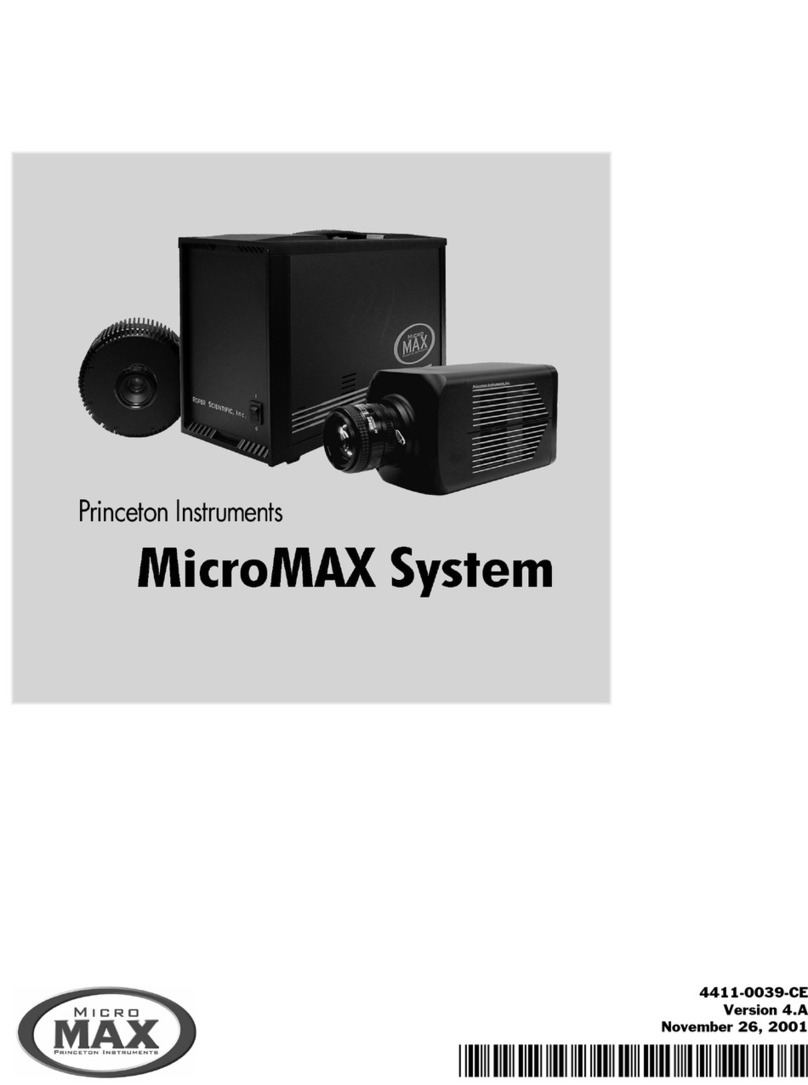
Princeton Instruments
Princeton Instruments MICROMAX SYSTEM User manual
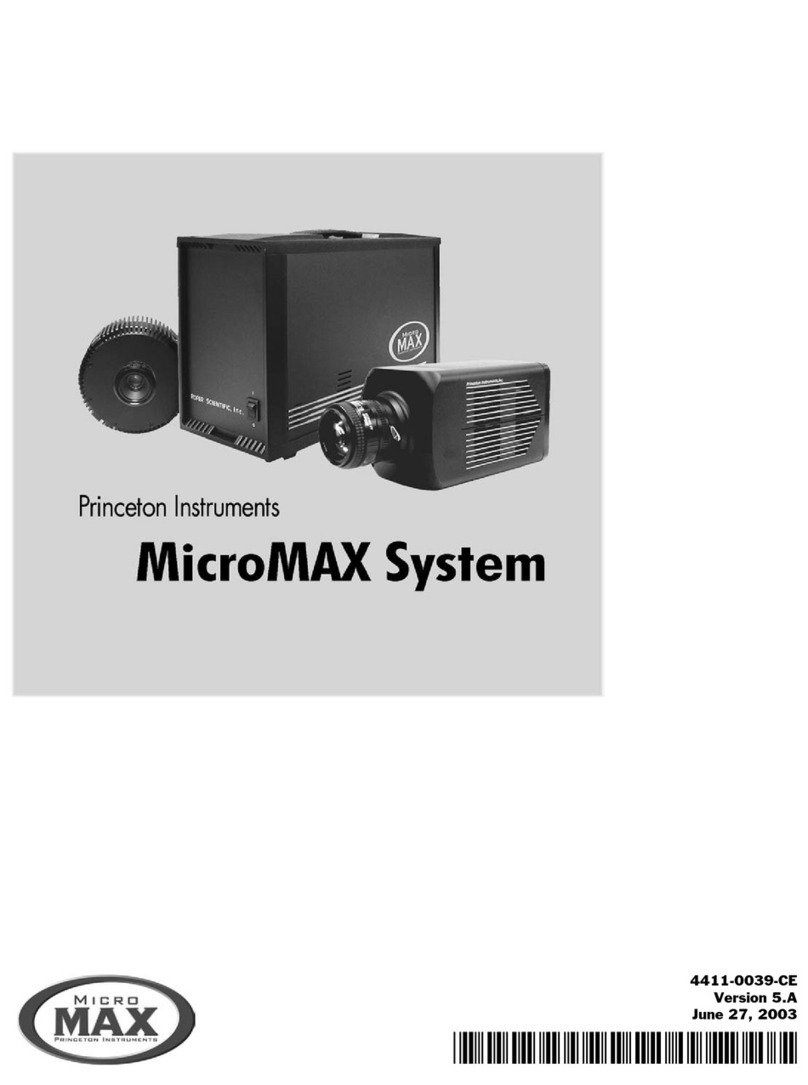
Princeton Instruments
Princeton Instruments MICROMAX SYSTEM User manual
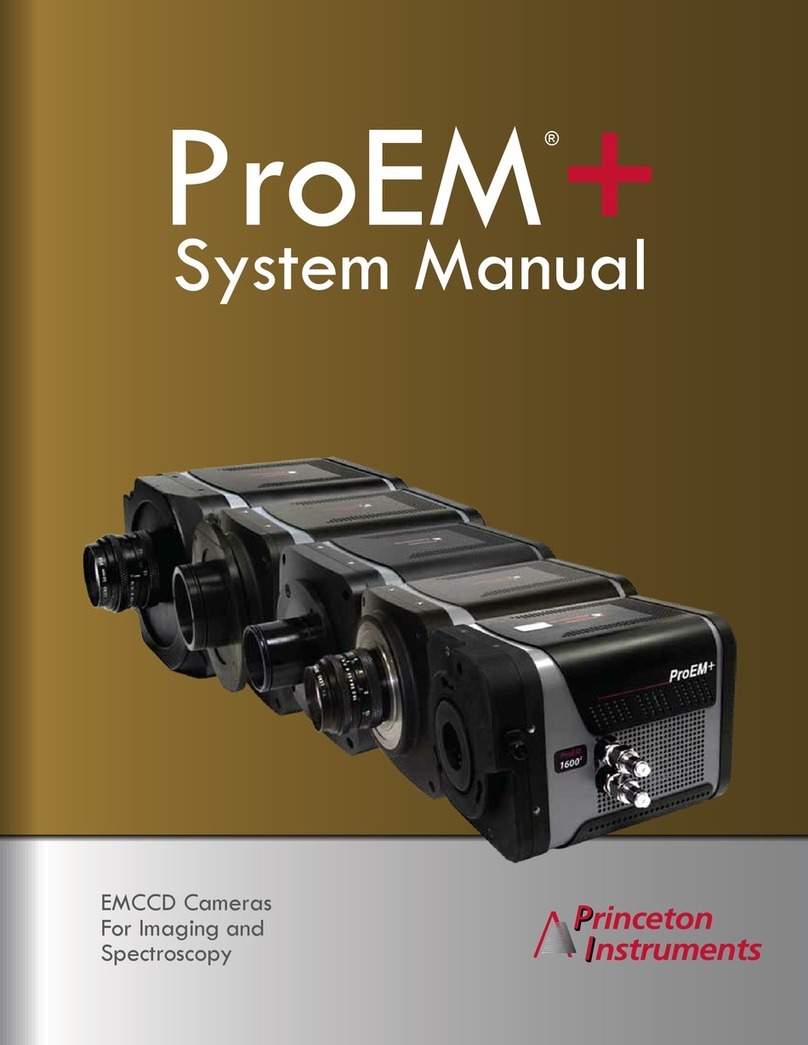
Princeton Instruments
Princeton Instruments ProEM+ EMCCD User manual
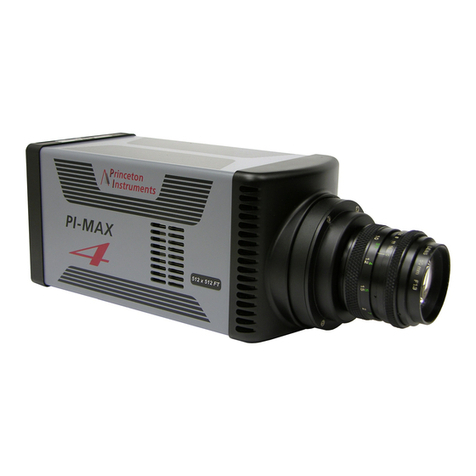
Princeton Instruments
Princeton Instruments PI-MAX4 User manual
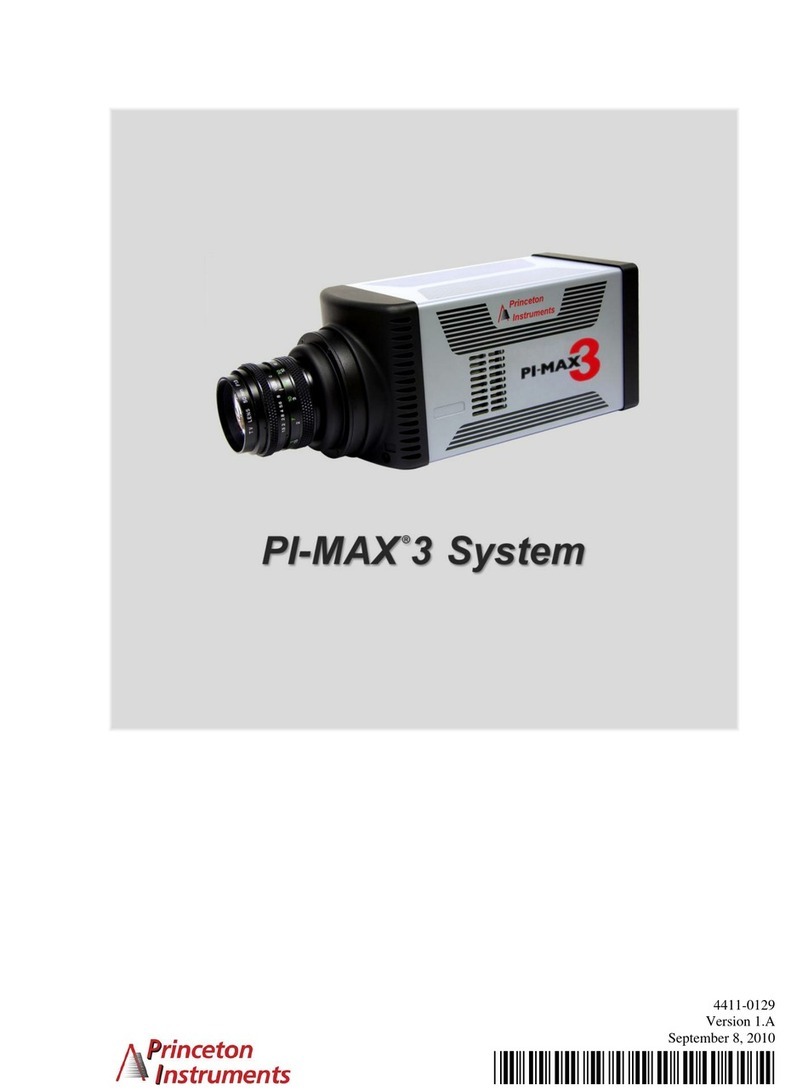
Princeton Instruments
Princeton Instruments PI-MAX 3 System User manual
